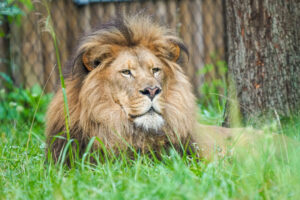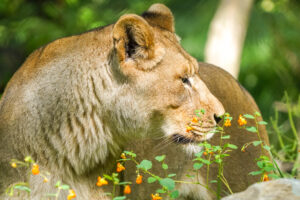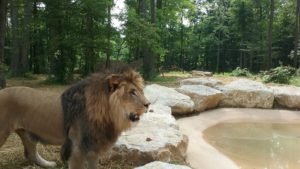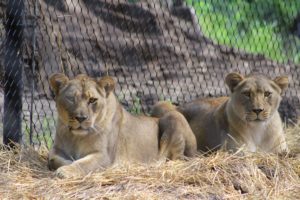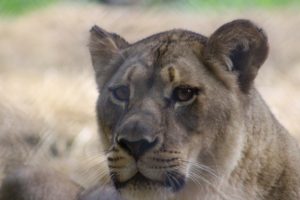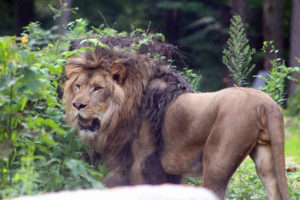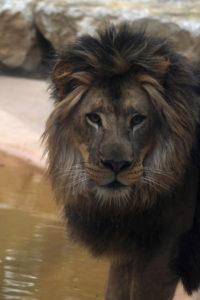AFRICAN LIONPanthera leo
Conservation Status: Vulnerable
Vulnerable due to hunting, either killed for sport or poached. Trophy hunting is popular in some regions in Africa, where tourists visit simply to hunt and kill a lion. Lions generally have a bad reputation as vermin and human killers, making them prone to being shot on site and intentionally poisoned carcasses. However, lions will typically run the other direction if they see a human.

Learn More
Color:
Short, tawny coats with white underbelly; sexually dimorphic, with males exhibiting manes which vary from black to blonde.
Size:
2.4 – 3.3m length; the average female height is 1.1m tall and the average male height is 1.2m tall; males are typically larger than females.
Weight:
270 - 530 lbs; the average female weight is 277 lbs and the average male weight 416 lbs.
Average Lifespan:
Males reach their prime between 5-9 years, few live past 10 years old. Females generally live longer, on average until 15 years old but up to 18.
Captive Lifespan:
Average 13 years; the oldest known was 30 years old.
Used to range throughout Africa, Europe, and Asia but are now only found in small areas of sub-Saharan Africa and a very small area of western India
Lions can tolerate a large range of habitats. Their optimal habitats are thick brush, scrub, and grass complexes for hunting. They can also live in sand deserts and in the mountains at high altitudes.
Mating:
Year-round but peaks during the rainy season; polygynous
Gestation/Incubation:
around 110 days
Litter/Clutch Size:
1-6 cubs
Mature:
4 years old for females, 5 years old for males
A predatory carnivore, feeding on almost any animal from rodents to rhinos, but the bulk of their prey consists of medium- to large-sized ungulates, including antelope, zebras, and wildebeests. African Lions are also known to scavenge other animals’ kills. Lions hunt in groups but the actual killing is done by an individual lion, typically a female.
Prides are fission-fusion societies, where members come and go and are rarely all together at once, but females are lifelong residents of their mother’s territory. Prides can consist of 2-40 lions. Males are large and showy because they have the opportunity to control the reproduction of many females if they rule over a pride. This fierce competition has led to infanticide.
1. Like human fingerprints, every lion has a different whisker spot pattern.
2. Manes tend to indicate individual fitness for male lions
3. Male lions start to roar at 1 year old and females start shortly after. Roaring communicates territories and demonstrates aggression towards enemy lions, while also communicating between pride members.

